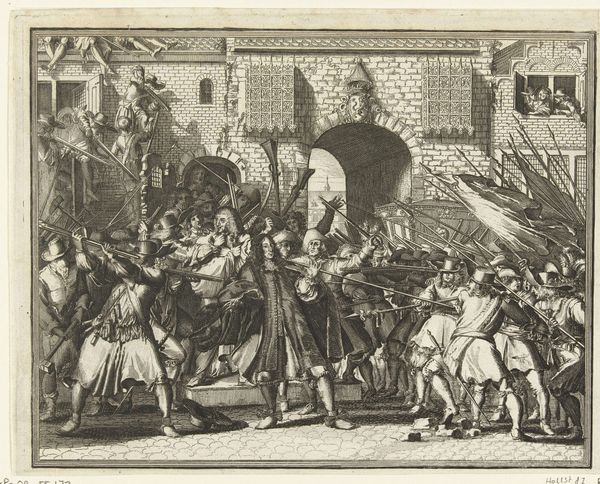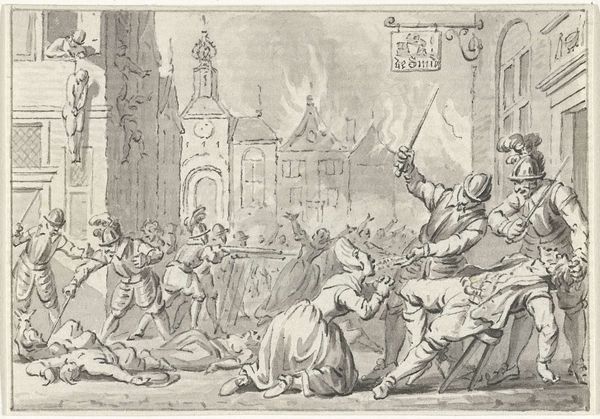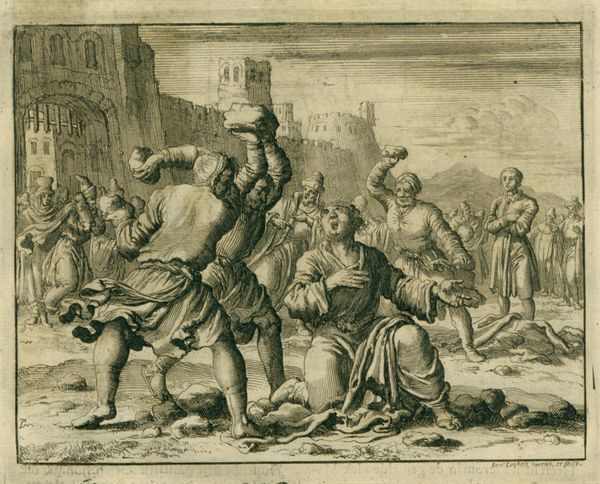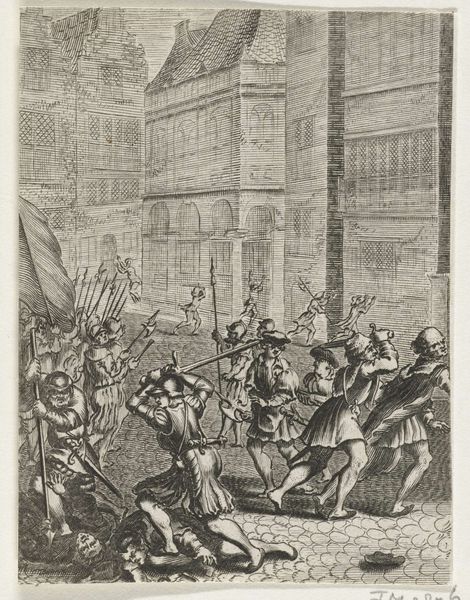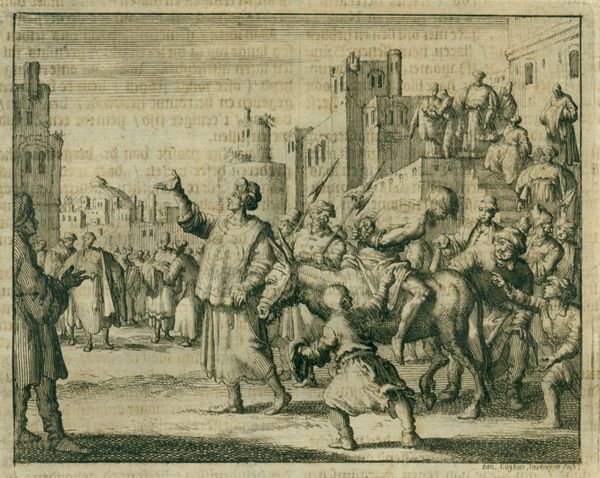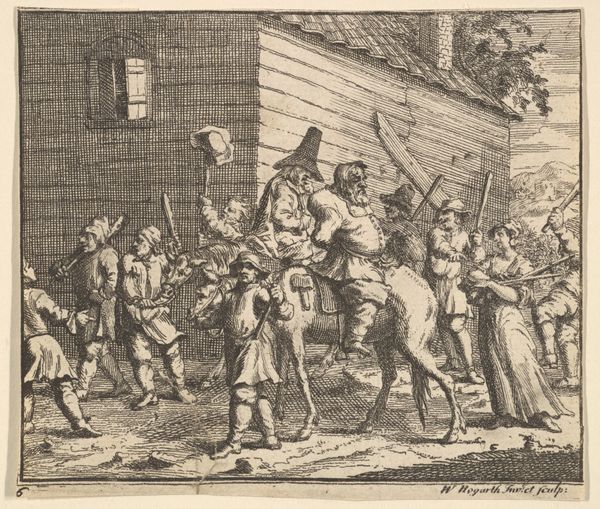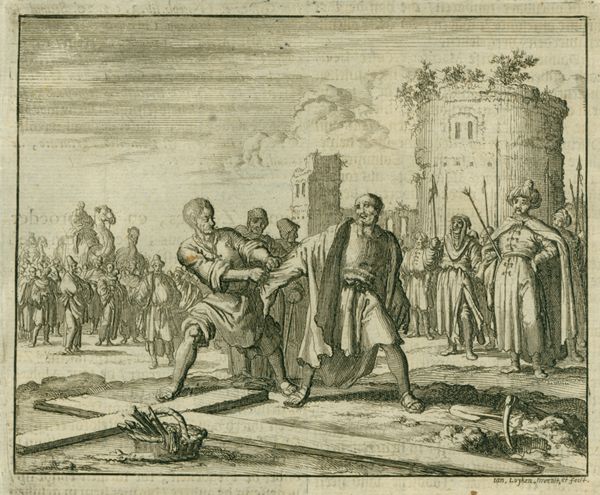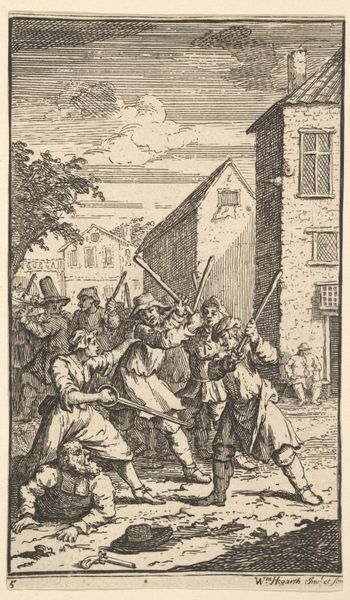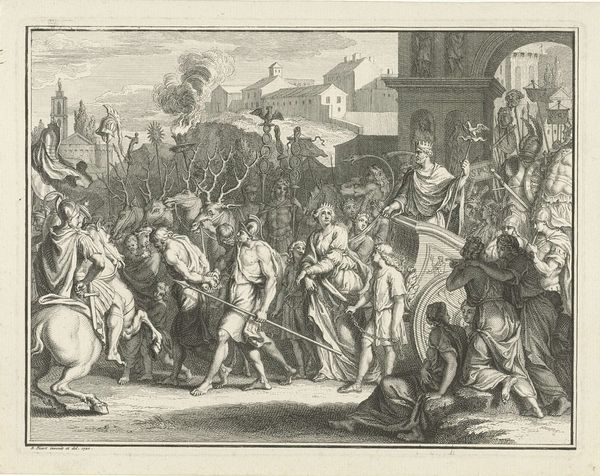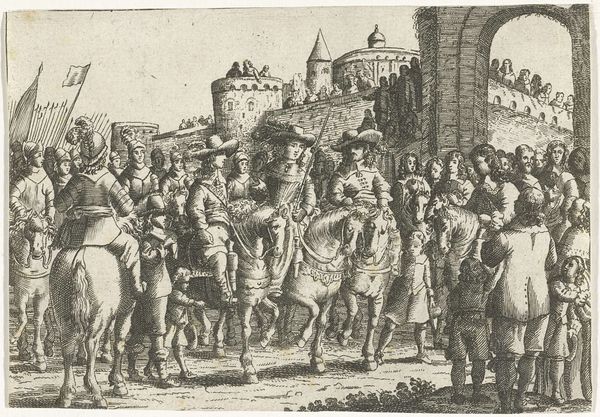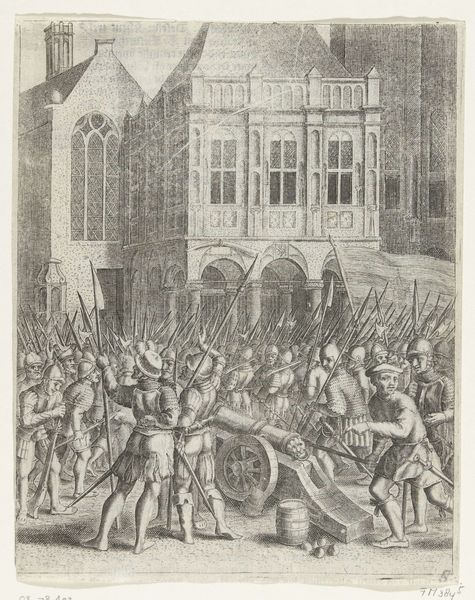
print, engraving
#
narrative-art
#
baroque
# print
#
figuration
#
cityscape
#
history-painting
#
engraving
#
realism
Dimensions: height 117 mm, width 140 mm
Copyright: Rijks Museum: Open Domain
Curator: Look at the drama and tension in this piece. The lines are so sharp; the movement, although static, just explodes. Editor: Indeed. This print, titled *The Anabaptists Occupying Dam Square, 1535*, created between 1662 and 1665 by an anonymous artist, depicts a critical event from Dutch history using engraving techniques to illustrate the intersection of religious fervor and civic upheaval. Curator: The social implications of depicting such an uprising are compelling. Consider the political and religious environment in which this was made, over a century after the depicted events. How does the engraving technique itself become a tool for disseminating particular views on labor, dissent, and power structures? Editor: Formally, I'm struck by how the architectural structure of the buildings creates depth. The light falls in such a way that even the cobblestones seem vital. Note also how the artist uses contrasting textures to create visual interest and highlight certain characters within the scene. Curator: Yes, and it is interesting that it comes in a print form. Who had access to it? What class and community would have prints available? Did the relative inexpensiveness make this kind of historical narrative accessible, and if so, to what ends? Was it simply to be shocking? Editor: Perhaps, but its linear structure pulls you in to consider specific relations among the crowd. How they press forward to attack those lying prostrate on the ground, and then upward to follow the sharp diagonals of their weaponry... the organization directs the eye towards each violent detail. Curator: To return to your earlier note on the cobblestones. The physical, laborious task of paving roads intersects powerfully with themes of social order and control in an era grappling with dramatic changes in governance and economies. It adds to the historical richness of the piece and the environment, does it not? Editor: Certainly, it grounds us while letting the eye travel through the chaos of clashing bodies and architecture. The visual organization lends itself towards contemplating not only a physical reality but also its abstract depiction, as you suggest.
Comments
No comments
Be the first to comment and join the conversation on the ultimate creative platform.
